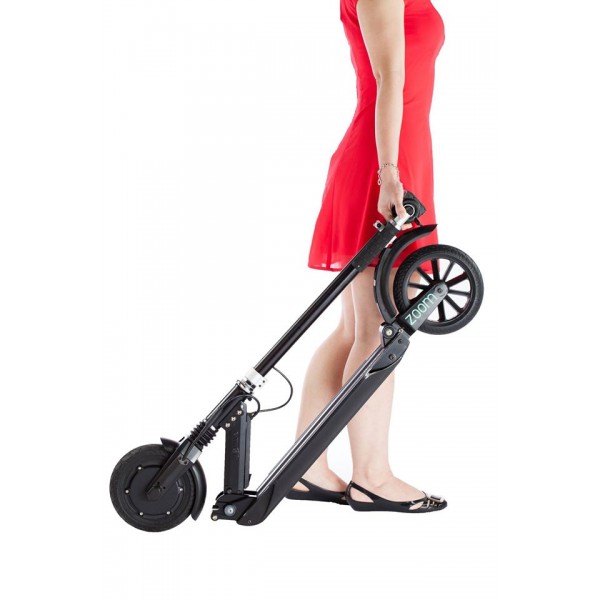
THE FIRST THING you need to know about scooters is that it’s impossible to look cool riding one. When you ride one, people look at you with disdain. They shout things like, “you’re the problem!” and “get off the sidewalk!” (Seriously.) They try to get in your way as much as possible. Even people on hoverboards and electric skateboards judge you. These are just facts.
The second thing you need to know about scooters is that there’s a decent chance you’re going to be riding one soon. It might be a fancy electric seated thing from some hip startup, but just as likely it’ll be an old-school, kick-push-and-coast, Razor-style ride. Why? Because we need a way to move around that isn’t inside a car.
The UN predicts the global population will hit 9.6 billion by 2050. All of that growth will come in cities—two thirds of those people will live in urban areas. We’re breeding like rabbits, and packing people into ever-smaller, ever-taller, ever-more-crowded metropolitan areas, because it’s not like there’s more land in Manhattan or San Francisco or Beijing we’re just not using.
This isn’t one of those “think of your grandchildren!” problems. Our cities are already clogged with traffic, and filled with hideous parking garages that facilitate our planet-killing habits. Even the automakers recognize that the traditional car business—sell a car to every person with the money to buy one—is on its way out. “If you think we’re gonna shove two cars in every car in a garage in Mumbai, you’re crazy,” says Bill Ford, Jr.—the chairman and former CEO of the company his great-grandfather Henry founded to put two cars in every garage.
The problem with moving away from car ownership is that you give up one its biggest upsides: you can usually park exactly where you’re going. Public transit, built around permanent stations, can’t offer that. That’s called the “last mile” problem: How do you get from the subway or bus stop to where you’re actually going, when it’s just a little too far to walk?
There are plenty of possible last-mile solutions: bike-share programs, Segway rentals, folding bikes, even skateboards. In Asia, for instance, a number of cities have experimented with people riding a variety of small, economical “personal electric mobility devices” to get from public transit to their destination. “They are a low-carbon, affordable, and convenient way to bridge the first and last mile gap,” Raymond Ong, an assistant professor at the National University of Singapore’s Department of Civil and Environmental Engineering, told Eco-Business.
Electric kick scooters, goofy they may be, are a particularly good answer to the last mile problem. They’re light enough to sling over your shoulder, and small enough to fold for stowing in the trunk of your Uber / Tesla / Hyperloop pod. They’re easy to ride just about anywhere, require minimal physical exertion, and are relatively affordable.
For the last few weeks, I’ve used an electric scooter as part of my daily commute. It’s called the UScooter. It costs $999, and it’s coming to the United States after a successful debut in China. It’s got a range of 21 miles and hits 18 mph with just a push of my right thumb—on a scooter, that feels like warp speed. Every time I ride it, I feel ridiculous. But as I zip up and down the sidewalks of San Francisco, bag slung over my shoulder at the end of a long day, I do it like the fat kid strutting in that “haters gonna hate” gif.
Go ahead, sneer at me from behind the wheel of your SUV. This thing I’m riding is the future. Maybe.
Ridin’ Nerdy
The UScooter was born about five years ago, under another name: E-Twow. (It stands for Electric Two Wheels, and you pronounce it E-2. It makes no sense.) It’s the work of Romanian engineer Sorin Sirbu and his team in Jinhua, China. Sirbu’s friend Brad Ducorsky helped with the development and is now responsible for the improved, better-named Americanized version.
I am squarely the target demographic for the UScooter. Most mornings for the last few weeks, I’ve ridden it out of my Oakland apartment and down the street toward the BART station. I slide to a stop ten blocks later, fold it up, pick it up by the bottom, and run up the stairs to catch the train. I stash it under a seat, or stand it up on one wheel for the ride. Then I carry it up the stairs out of the San Francisco station, unfold it, and ride to work. My 50 minute commute—15 minute walk, 20 minute train, 15 minute walk—is now more like 30.






